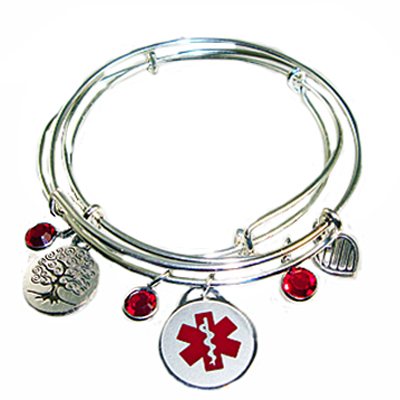
Patients with CAPS are one in a million, but that rarity and its presence at birth (even infants with CAPS can be symptomatic), make it important for children with the disease to carry their medical information.
Children, especially below a certain age, may not be able to fully articulate the specifics of their condition. The concern of what would happen in an emergency if a parent or guardian were not there is undoubtedly a weight on every parent’s mind.
In order to lessen this vulnerability and to ensure that whoever is present at an emergency is properly informed of the nature of the child’s condition, many parents seek out various forms of medical identification.
Two of the prominent options for medical identification are medical bracelets or tags, and the standard medical ID card.

Medical identification jewelry has made leaps aesthetically; patients can now find an ID that fits their sense of fashion. Patients can find anything from medical dog tags, watches, and sports bands to charm bracelets. You can browse the various styles on websites like this one.
These may not only appeal to your child enough for them to wear them without complaint, but you can be sure with medical jewelry that the medical information will be with the child as long as they’re wearing it.
Medical ID cards are a great option for those who are less inclined to accessorize, but not the ideal choice for patients who don’t carry a wallet. Secondarily, if the patient’s wallet is left at home with the ID in it, the card is pretty ineffective. However, medical cards may be a more economical route as you can make them yourself. There are multiple sites that offer printable templates, like this one.
So, which one is better? Medical ID cards versus medical bracelets: Although the jewelry may be more popular among the younger crowd, it ultimately comes down to what works best for the individual. And of course, there’s no harm in investing in both.
Featured image source: Times Free Press.


